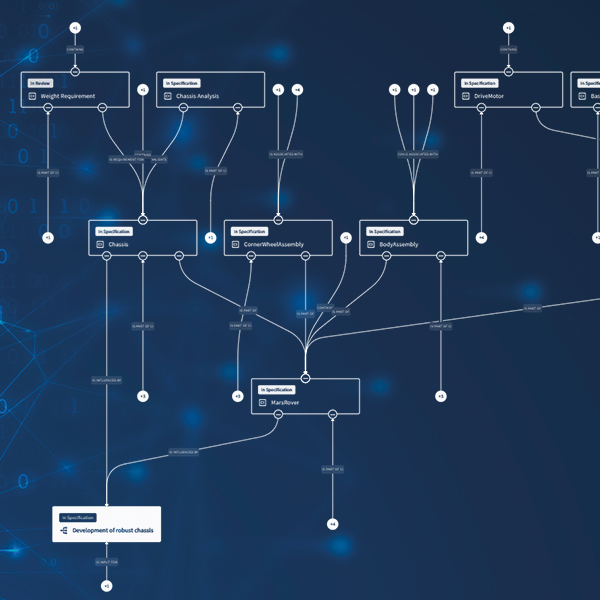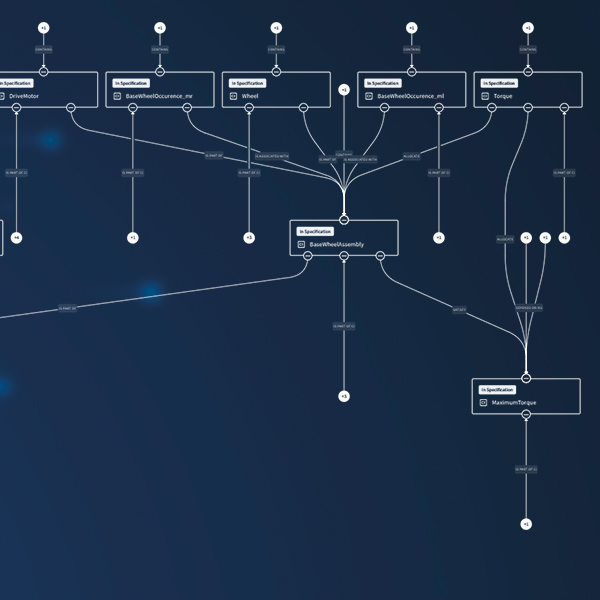
|
Cross-domain product variant management with OpenCLMBy Rainer Zeifang Efficient variant management of smart, connected products is the key to the future success of manufacturing industry. At the same time, the variance in products that include electronics and software places particular demands on variant management as it requires a cross-domain approach. With OpenCLM, PROSTEP offers a solution to this challenge that takes a graph-based approach with integrated data linking. 
Complex technical products and systems with a high proportion of electronics and software make it possible to tailor solutions to the needs of specific customers and markets more easily and quickly than ever before. Their behavior can even be modified during live operation by importing new software versions "over the air". This further increases product variance. High-performance variant management is needed in order to be able to manage and trace these products throughout the entire lifecycle, from development through to operation. The traceability of variance – from the requirements to the functions and logical behavior through to the components – plays a key role in the context of documentation and error analysis in particular. Variant management is closely related to configuration management, albeit with different focal points. Variants provide a generic description of alternative versions of a product, system or service that result from combining different features, options and components. Configuration management, on the other hand, is responsible for keeping track of the specific selection and combination of components that are required to create a concrete variant. Variants can be described at different levels of abstraction, i.e. the level of product features, the architecture level and the component level. This remains true regardless of whether mechanical, electrical/electronic or software variants are involved. The domain-specific variants may however be interrelated and/or interdependent, meaning that traceability-focused cross-domain variant management is essential. Higher-level information network The difficulty here lies in the fact that the domains speak different languages and use different IT tools, which often have their own variant management systems. In most companies, neither the variant management process nor the abstraction levels are standardized across domain boundaries. This makes implementing centralized variant management a complicated and time-consuming task. The approach developed by PROSTEP therefore leaves each domain with sovereignty over its own variant management, its own process and its own preferred abstraction level while integrating the information objects from the distributed systems in a higher-level graph. Strictly speaking, these are not integrated but simply linked or referenced. The federated source systems are connected using high-performance connectors that permit real-time access to the information objects. The information objects of the domain-specific models, tools and processes are mapped with their relationships and dependencies as nodes and edges in the higher-level graph. This graph acts as a cross-domain information network that can be searched on the basis of the available metadata. The targeted use of relationships in this graph makes it possible to map cross-domain variants in a structured, traceable manner. In addition, the graph-based approach supports the automatic generation of variant configurations and contributes to validating their consistency. 
It also facilitates the graphic visualization of dependencies and the analysis of the impact of changes. The integration of information in a single higher-level graph is underpinned by the use of a shared language or uniform language space that converts the various domain-specific languages into uniform elements and relationships. To do this, a class model for the elements and relationships must be designed that can be geared to standards such as STEP or widely used ontologies. This class model is then mapped to the domain-specific designations or classes. Mapping the approach in OpenCLM It is advisable to map a cross-domain variant management approach in a traceability-focused solution such as OpenCLM as this makes it possible to track the relationships between the domain-specific variants. This ensures traceability in both directions. It proactively manages the development process, the monitoring of project progress and change management; retrospectively, it supports impact analyses, error management and audits. OpenCLM makes it possible to integrate or reference all relevant information from the variant management process, system modeling and configuration management. This traceability solution can access a large number of different source systems via OpenPDM’s proven connectors or standardized web interfaces such as OSLC. In addition to depicting cross-domain variance, the information network created in OpenCLM can also be used to document heterogeneous baselines. This requires unalterable versions of the currently used references to (unalterable) information objects in the distributed source systems. The OpenPDM connectors can be used to generate baselines in the connected source systems directly from within the solution, for example in order to document the cross-domain selection of variant determination points for audits. OpenCLM is a lean, smart web application for controlling variant management across domain boundaries and getting to grips with the digital variant thread in heterogeneous product development environments. It allows users to make cross-domain decisions about product variants and document variants across different systems. Thanks to the solution’s generic approach, it is very easy to expand existing use cases, such as traceability, to include new applications that are based on distributed systems. 
|
|
| © PROSTEP AG | ALL RIGHTS RESERVED | IMPRINT | PRIVACY STATEMENT | YOU CAN UNSUBSCRIBE TO THE NEWSLETTER HERE. |

